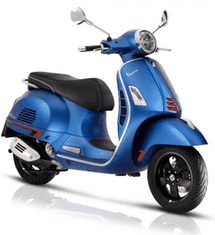
VESPA Scooter PDF Manuals
VESPA Scooter Wiring Diagrams
History of Vespa Scooters
Above on the page there are several PDF Manuals & Wiring Diagrams for VESPA Scooters.
First appearing in 1946, Vespa immediately became a symbol of Europe rising from the ashes after the war.
A shattered economy and dire road conditions did little to fuel car production, and it was the Vespa that took over this vacant niche in personal transportation.
Aeronautical engineer Corradino D'Ascanio has developed a completely new personal vehicle for the Piaggio factory, free from unnecessary parts, easy to maintain and easy to operate.
Stylish design and affordability made the Vespa the world's first successful scooter.
The first Vespa scooter was powered by a 98 cm³ 2-stroke engine with 3.5 horsepower.
It developed a speed of up to 60 km/h and had three gears.
This vehicle had nothing to do with an uncomfortable and noisy motorcycle and at first glance was striking in quality and elegance.
A real scooter boom began in Europe: by the end of 1949, 35,000 scooters were produced - Italy recovered from war wounds and began to move on Vespa.
By the mid-50s, the number of scooters produced reached a record value of one million: Vespa production was launched in Germany, Great Britain, France, Belgium, Spain.
Vespa traditionally comes in three versions: models with a displacement of up to 100 cm³ for city streets and short distances, more powerful versions with a displacement of 125 cm³ and sports models for long journeys with a capacity of over 150 cm³.
Modern versions of the scooter combine classic unchanging design with the latest technological developments: for example, the 2008 GTS 300ie Super, with an engine of 22 horsepower and capable of speeds in excess of 130 km/h, is the most powerful in the Vespa range.


